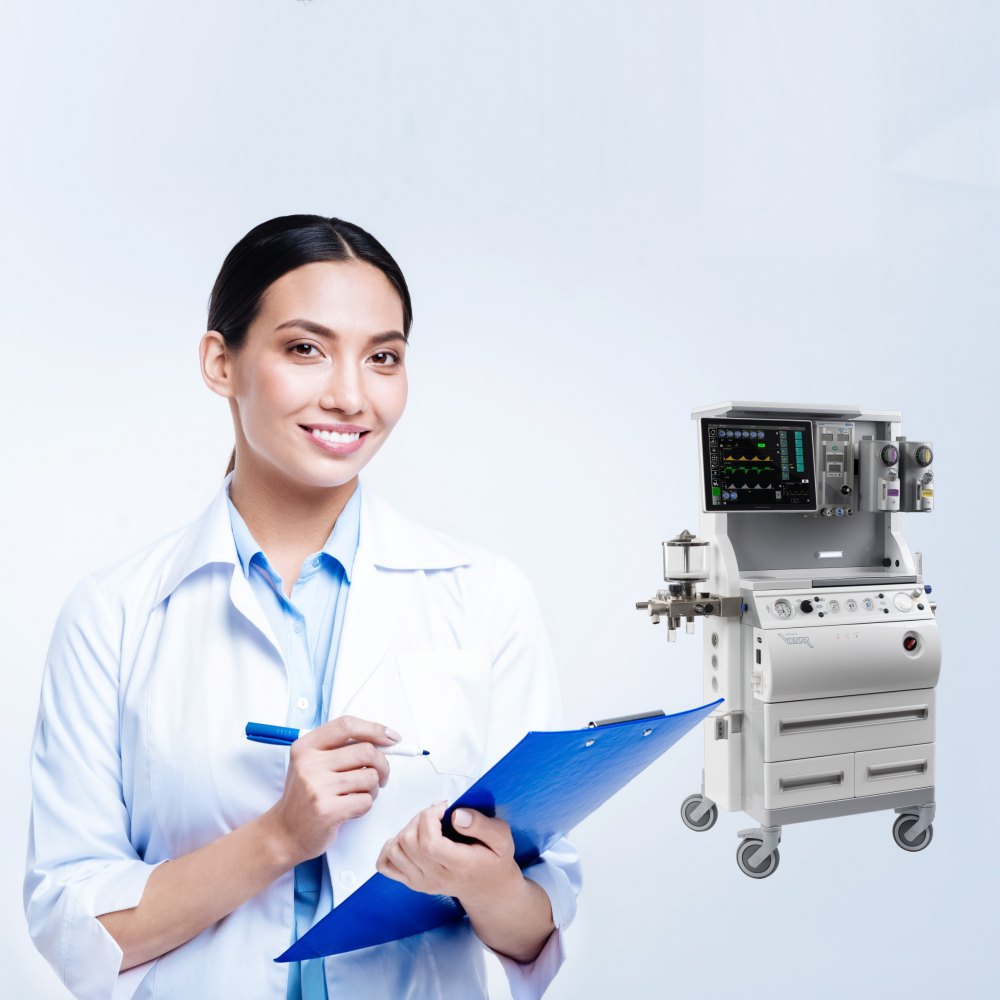
VENAR TS
Comfort, variability and reliability!

The anaesthesia unit VENAR TS is our newest solution with intuitive user interface and integrated full automatic electronic mixer. The colour 15" touch screen allows easy adjustment of ventilation modes, support and expert functions, flow-meter setting, alarms management, adjustment and monitoring of low-flow and minimal-flow anaesthesia, online lungs mechanics feedback and other functions. Our VENAR TS unit could be optionally upgraded to the Xenon anaesthesia workstation. VENAR TS meets all the highest standards for anaesthesia workstation with all available options as of integrated gas module analysis and monitor of vital functions with display 8,4" up to 17" size and optionally touchscreen as well as measurement of ECG, SpO2, NIBP, IBP, Temp, Cardiac output, CO2, AA, O2, Depth of anesthesia (qCON/BIS), Index of nociception/pain (qNOX) and other unique features.
The unit VENAR TS was developed to integrate all CHIRANA experiences since 1968 with the newest technologies and all collected requests and demands of doctors from area of anesthesiology.
The device has integrated monitoring module Profilungs that also carries out the function of flow meter, allowing for comfortable and safe control and monitoring of the quantity and concentration of the incoming fresh gas to the patient. It performs all the functions of Profilungs (Computer assisted ventilation, diagnosis of lung mechanical properties, archiving, optimizing ...). The device is controlled through 15" touch screen intuitive user interface.
The basic version of device can be equipped with wide range of additional technologies and modules. VENAR TS can be made in version to work with Xenon, the newest and the most modern anesthetic gas which can be proudly called as "ideal anaesthetic agent". In such a version, it is fully optimized in terms of functions, parameters and price affordability.
The innovation is the possibility to equip the device with a station with linear dosing syringe, BIS monitoring and wireless connection to central monitoring system Chirana ICARD.
-
volume controlled - CMV
-
pressure controlled - PCV
-
supporting - PS, SIMV-PS, MVs,
-
multilevel ventilation - PMLV®
• electronic driven ventilator with unique Chirana inbuilt air generator
• tidal volume (VT) from 5 ml up to 1600 ml
• respiratory rate (frequency): 4 - 100 c/ min
• optional Xenon version with integrated module for control and monitoring xenon anesthesia. Xenon = IDEAL ANESTHETIC, as it does not cause any negative side effects comparable with all other currently used anesthetics, but in addition Xenon protects the brain and the whole organism and especially health of elderly people (risk of heart failure and other negative side effects of currently used anesthetics are eliminated using Xenon). Another advantage of Xenon is the rapid onset of anesthesia as well as the rapid releasing of the patient from anesthesia.
• 15” touchscreen intuitive user interface with different skins from Basic to Expert
• graphic display of curves, loops, and trends
• option of mainstream CO2 gas analysis or full integrated gas analysis sidestream method including paramagnetic O2
• aspirator of waste gas AGSS and ejector suction of biological secretions
• independent flow meter for O2 inhalation
• universal system “Selectatec Interlock” of vaporizers
• individual electronic flow mixer EFA with manual setting of gas mixture with automatic protection against hypoxic mixture /O2, AIR, N2O/
• sophisticated Quick Start system for extreme situations, allowing quick-start of ventilation in CMV mode via entering of the patient’s weight
• multi-level ventilation of apnea patients with difficult ARDS, viral pneumonia and another non-homogenous lungs complications
• complete metabolic analysis of a patient, including energy consumption by organism
• proportional control of minute ventilation APMV in all pressure control modes
• cardiac bypass is intended for cardio-surgical workstations and in the case when anaesthesia is provided during operation on extracorporeal circulatory system
• breathing circuit heating to minimize condensation
• new breathing circuit with the possibility of removing the CO2 absorber during the operation available as an option
• calculation of gas consumption during surgery





